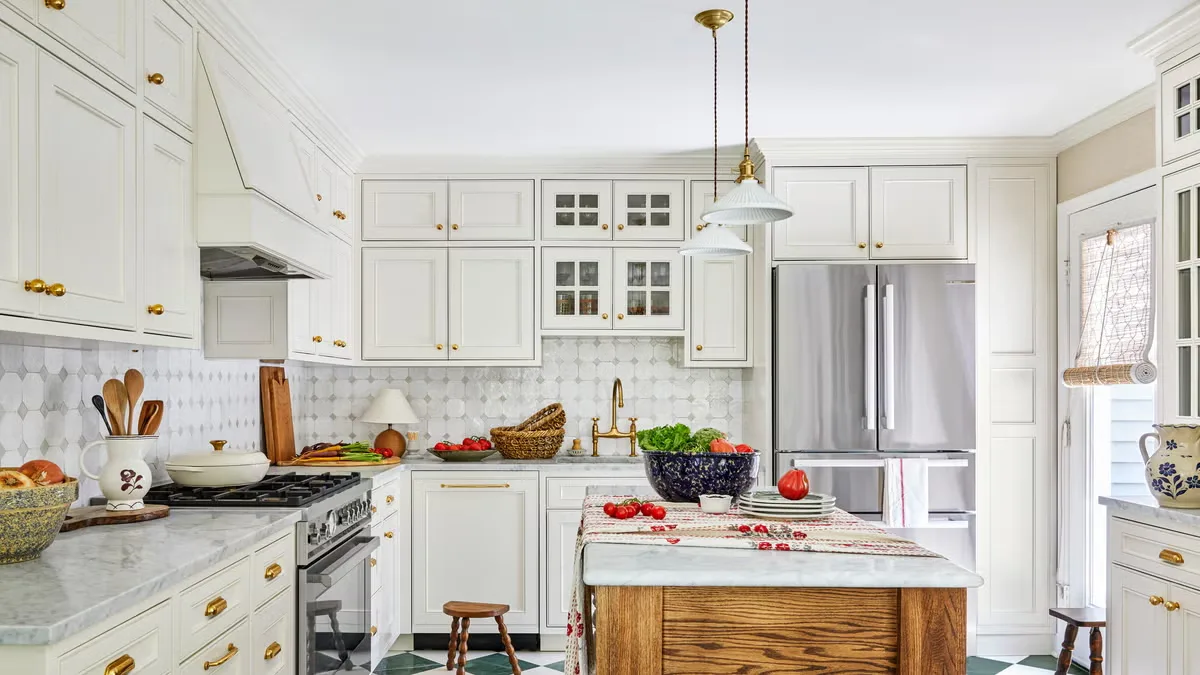How to Pair Floor Tiles with Kitchen Cabinets?
Designing a kitchen is about building a space that feels cohesive and makes daily use easy. One common mistake many people make, especially during remodelling, is treating the cabinets and floor tiles as separate choices. The goal is to build visual balance. You want contrast and colour that strikes out, but not in a way that overwhelms the overall look of the space. In short, the floor tiles design needs to sit well beside your kitchen cabinet finish, colour and layout.
This post breaks it down into actionable tips, examples, and materials that are easy to apply. Whether you have dark wood cabinetry or minimal white drawers, there’s a floor tile match that won’t cost a fortune and will look just right.
Start with your Floor
Most kitchens in Indian homes experience a lot of foot traffic, and the occasional utensil drop is also common. That means your flooring has to be strong, stain-resistant and easy to clean. While materials like natural stone or wood can be attractive, tiles have always been more practical.
Now, with brands like Simpolo Tiles and Bathware, you don’t have to choose between style and functionality. Their Dacite Lime or Sparko Nero from Sparko collection provides the neutral base that many modern homes require. These kinds of floor tiles design options not only look high-end but are also designed to stand up to spills, scratches and heavy use. So when starting your kitchen design, settle on the flooring tone and texture first. Cabinets can adapt more easily later.
Matching Tones vs. Contrasting Styles
Matching everything can create a clean and minimalist look in a kitchen. However, too much similarity can make the whole setup feel flat. On the other hand, too many contrasts without logic might make the space feel cluttered or noisy.
One good method is to create balance. For example, if you choose a dark floor tiles design like deep browns or greys, go for cabinets that are a shade or two lighter. Off-white, ivory, or even pastels can tone things down while still standing out. In contrast, if the shelves are made of dark wood, opt for something which can maintain a natural mood while visually grounding the space.
A lot of this depends on the size of your kitchen. Smaller kitchens usually do better with softer tones on either the floor or the cabinets to avoid looking too tight.
Texture Makes a Difference
The texture is one of those details that seems small but can significantly alter the overall feel of your kitchen. A glossy floor reflects more light and adds some shine. This pairing works especially well with matte or satin-finished cabinets. It creates some play between rough and smooth.
If you are working with the best tiles for kitchen that mimic stone or wood textures, it is better to keep the cabinet surfaces clean and sleek. Too many textured surfaces in one space can feel visually heavy.
Pick a Tile Finish that Supports the Kitchen Routine
Kitchens are high-traffic zones. Your flooring must be able to take all without turning dull or slippery.
That is why tiles remain the most sensible option. From a brand perspective, premium manufacturers like Simpolo Tiles and Bathware have built-in features that matter more than people realise. Their digital visualizer lets you preview how the best tiles for kitchen and cabinet combinations will look in your space. You can scan in 3D, check angles, and test how materials look next to each other before making a purchase.
The Size and Layout Change How the Kitchen Feels
Cabinets typically occupy a significant amount of wall space in Indian kitchens. The floor becomes the breathing room here. That’s why the tile size and layout make a big difference.
Large-format tiles work well in compact kitchens because they reduce grout lines. It gives the floor a cleaner, wider feel. This is useful if your cabinets are bold or detailed. If you’re using patterned cabinetry or handles, the tile layout should stay simple. Straight or brick-bond patterns keep the focus on your furniture, not the floor.
Don’t Forget the Skirting
The edge where your floor tile meets the cabinet bottom is called skirting. If the contrast is too sharp, it looks unfinished. You can use the same floor tile cut as a skirting strip or pick a slightly darker or lighter strip if your cabinetry demands it. But avoid too much variation here.
Also, leave enough space for maintenance. Tiles that butt too tightly into the cabinets may cause problems during cleaning or plumbing access. You can match skirting strips to your tile batch, which keeps colour and texture consistent.
Conclusion
Pairing floor tiles with kitchen cabinets isn’t just about matching colours—it’s about creating a space that feels balanced, functional, and visually appealing. From selecting the right tile tone and texture to ensuring a smart contrast with cabinet finishes, each choice contributes to a more cohesive kitchen design. Keep practicality in mind—opt for tiles that are durable, easy to maintain, and suited to everyday use. With the right planning, your floor and cabinets can work together to elevate the look and feel of your entire kitchen.





